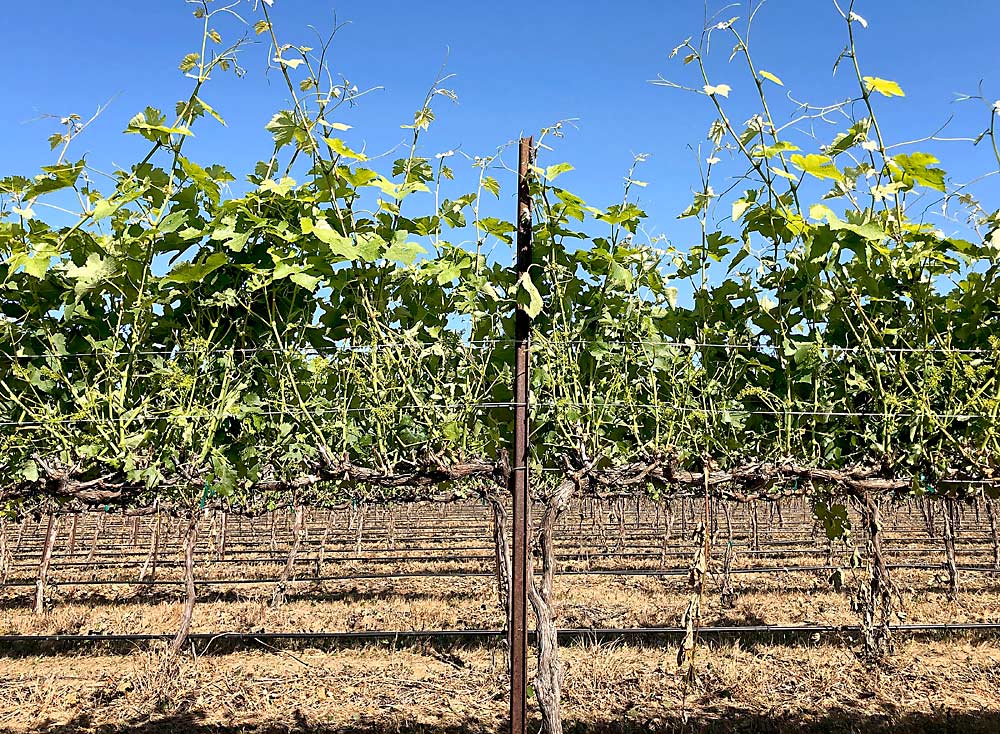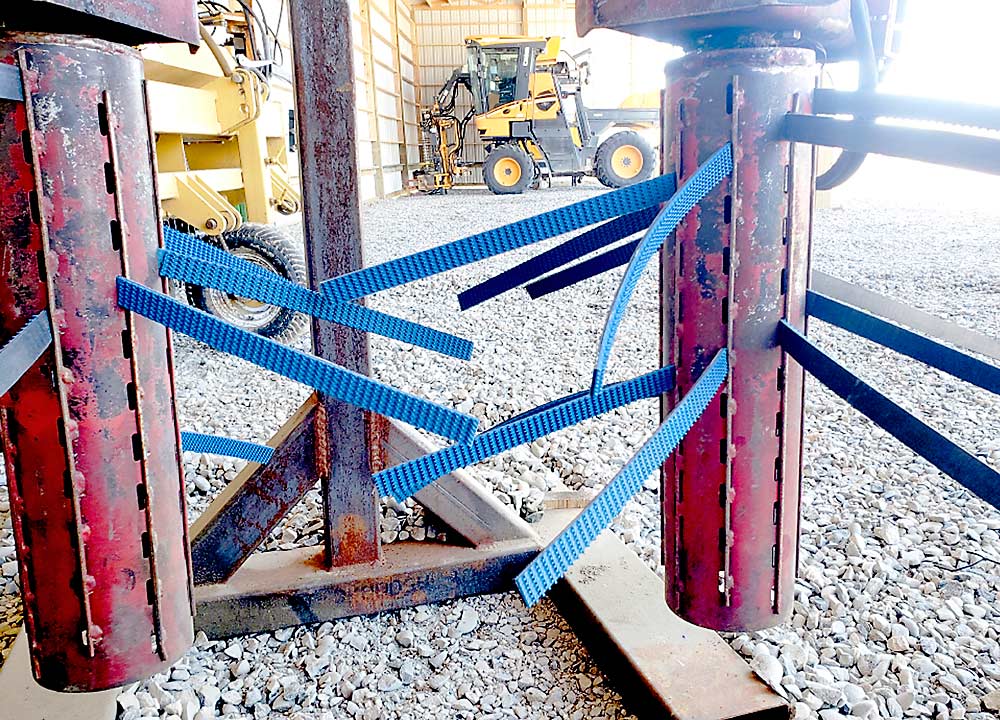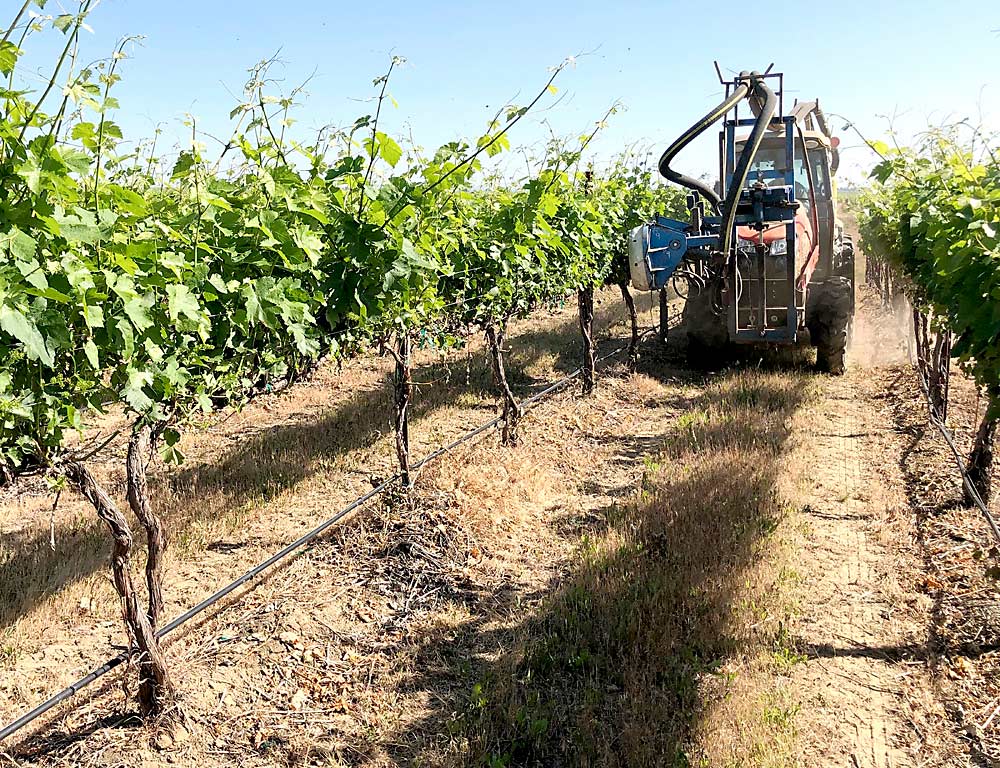
Shoot thinning followed by trunk scrubbing. Leaf removal two ways.
Layering mechanical techniques can eke more value out of machinery and further reduce labor costs, according to two leaders in vineyard mechanization.
Kari Smasne, vineyard manager for Ste. Michelle Wine Estates’ Canoe Ridge Estate Vineyard, and Nick Mackay, director of vineyard operations for Results Partners, a management company in Milton-Freewater, Oregon, discussed their experiences adding mechanical tools to vineyards at the Washington Winegrowers Association’s annual meeting in March in Kennewick.
Vineyard managers throughout Eastern Washington are looking for the best ways mechanization can help ease labor expense in an industry that for decades turned up its nose at anything but human hands. That’s changing rapidly as mechanized management improves and winery acceptance grows. Growers are using mechanical tools even in premium blocks nowadays.
“There’s always something new and something to learn,” Smasne said at the conference.
Meanwhile, Clark Seavert, an Oregon State University agriculture economist, has found that mechanizing vineyard chores nearly always pays off with a net increase in cash flow. Last year, with funding from the Washington State Wine Commission and the Erath Family Foundation, he examined the costs and benefits of mechanical spur pruning, shoot thinning, leaf pulling and harvest. He also discussed the results at the Winegrowers’ conference. “The profitability is there, the financial feasibility is there,” he said.

At Canoe Ridge, Smasne has been using a shoot thinner for three years. The instrument attaches to a tractor and uses flexible whips attached to two horizontal spinning barrels to strip away shoots along the cordon. Last year, in a small block, she and her crews followed that by flipping the barrels vertically to “scrub” away trunk suckers between the cordon and the irrigation hose, hung just a few inches off the ground. A hand crew followed for cleanup.
The entire job by hand would have cost about $300 per acre. Using a combination of machine and hand crews cut that in half, not including the cost of the machine. That cost savings would make the combination of man and machine worth using on premium blocks, she said.
Smasne did the math on work done in a 3-acre high-tier Merlot block. She plans to continue experimenting with the technique on a larger scale in premium blocks this year.
In lower-tier production blocks, her company uses only machine thinning.

Mackay focused his talk on a two-step leaf removal process that he helped develop in 2017 at his previous job working for Mercer Ranches in the Horse Heaven Hills, working with viticulture director and mechanization maven Richard Hoff.
First, they attached a leaf remover, sometimes called a suck-and-cut deleafer, to a tractor to thin the foliage on the exterior of the canopy. Then, they attached a blower leaf remover to blast holes in the canopy and remove leaves from the interior. The end result was a semitransparent canopy that allowed airflow and light penetration that rivaled in quality a single hand labor pass, Mackay said.
He recommends the technique for smaller or high-tier blocks shooting for premium wines. A 25-acre block at 25 hours per acre at roughly $14 per hour would cost $8,750 for those chores by hand, in his estimates. “I know if I had high-tier blocks that I was typically hand leafing, I would be looking into this system,” Mackay said in a follow-up interview with Good Fruit Grower.
The attachments run about $76,000 combined, if they are both new, said Grant DeVries, sales manager for Vine Tech Equipment in Prosser. DeVries said leaf blowers were more popular about 15 years ago and have fallen out of favor with the advent of the lower-cost puller. Even fewer vineyards use both methods, as Mackay suggests. •
—by Ross Courtney
Related:
—Rise of the machines: Are you ready to mechanize? – Video






[…] Slapping around some vines with machinery. Side note: the vines are a lot more durable than we often think 🙂 (Good Fruit Grower) […]